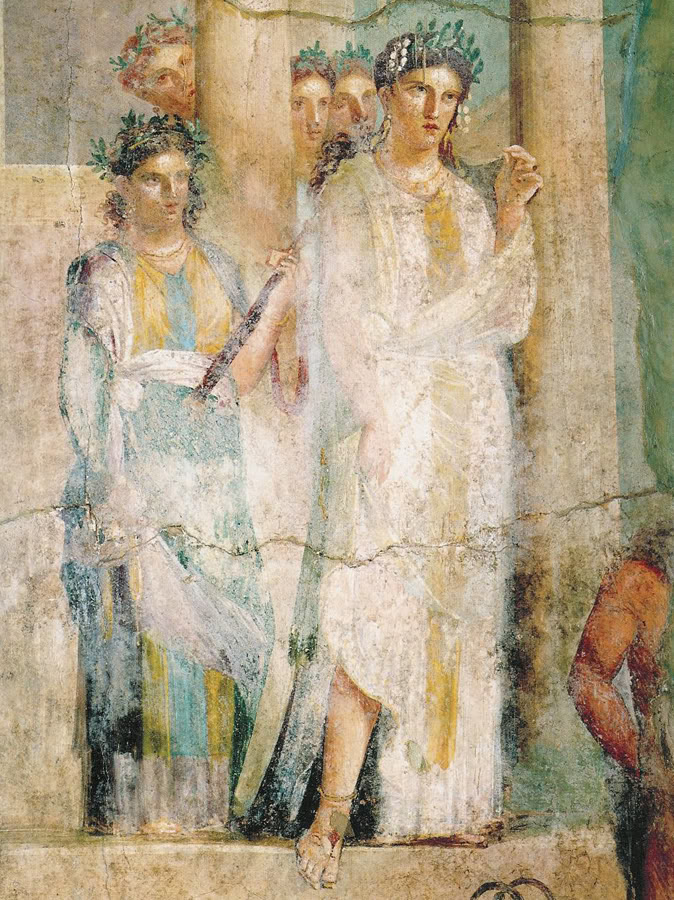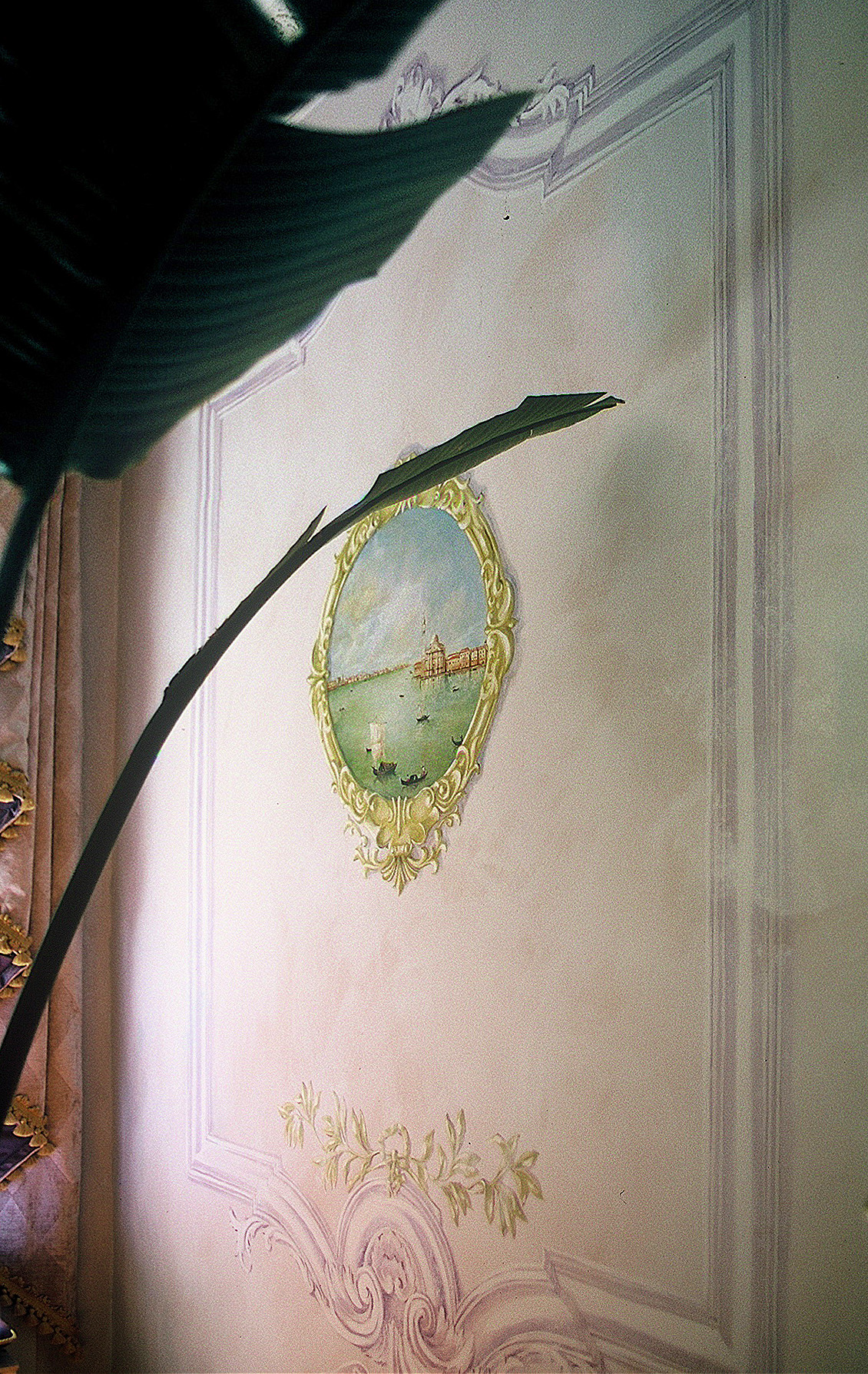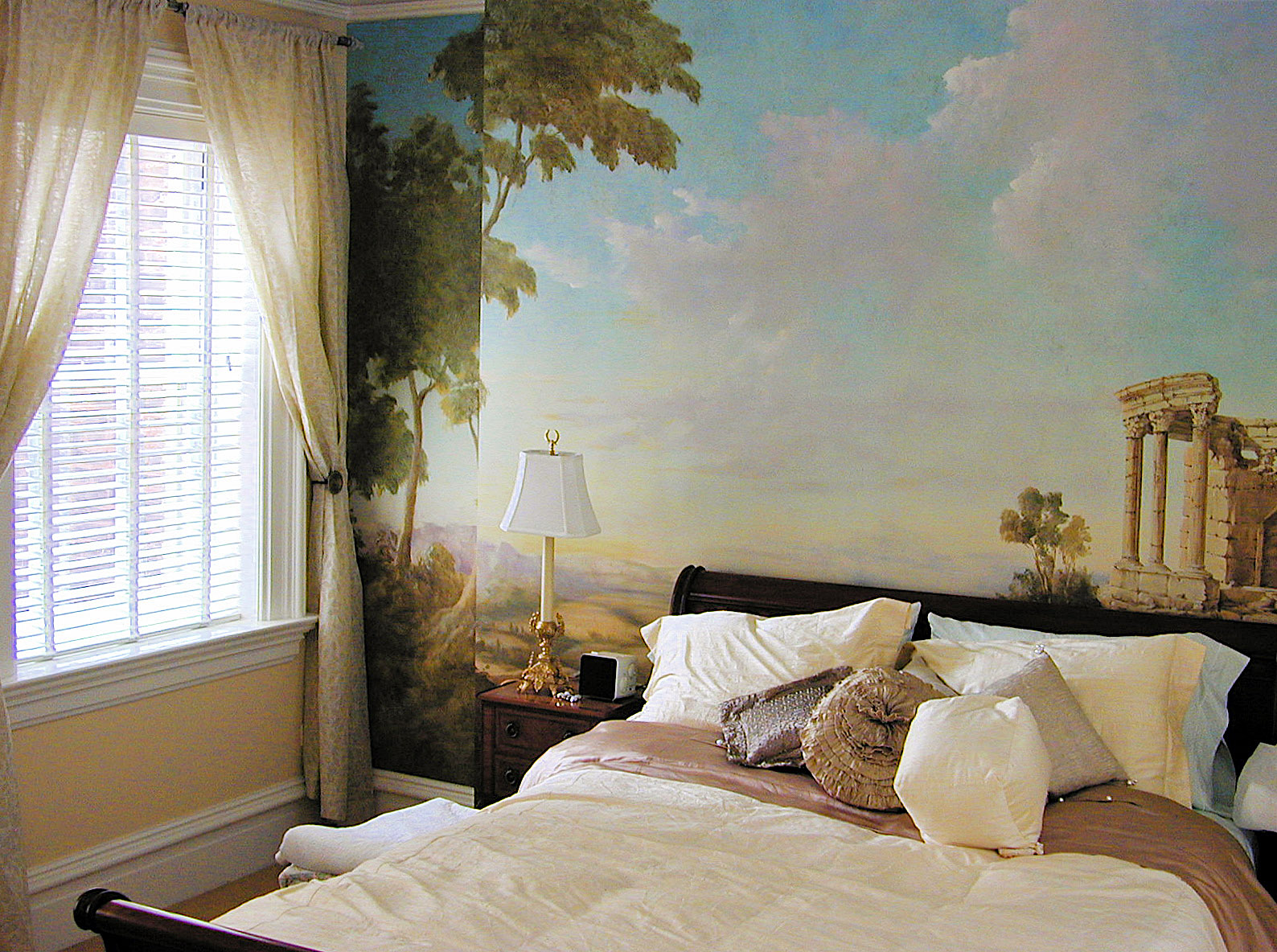Trompe l’oeil Pronunciation: (ˌ)trȯmp-ˈlə-ē, trōⁿp-ˈlœi Function: noun Usage: often attributive Etymology: French trompe-l’œil, literally, deceives the eye Date: 1889 1 : a style of painting in which objects are depicted with photographically realistic detail; also : the use of similar technique in interior decorating 2 : a trompe l’oeil painting or effect 3 : something that misleads or deceives the senses : illusion
I was eight when I first saw the Sistine Chapel. It was there that I first heard the word Trompe-l’œil which is French for ‘trick the eye’. Although the phrase has its origin in the Baroque period, when it refers to perspectival illusionism, use of trompe-l’œil dates back much further. It was (and is) often employed in murals. Instances from Greek and Roman times are common. When visiting Pompeii on my honeymoon, we saw exquisite trompe l’oeil’s in Pompeii such as this one. A typical trompe-l’œil mural might depict a window, door, or hallway, intended to suggest a larger space.
A typical trompe-l’œil mural might depict a window, door, or hallway, intended to suggest a larger space.
But, Michelangelo’s work on the ceiling of the Sistine Chapel is perhaps the best known example of trompe l’oeil in the world. You can see a great HD view of the Sistine Chapel that you will never see in real life…be sure to move your mouse over the picture and zoom in and out…you’ll get a tour of the WHOLE chapel that will make the hairs on the back of your neck stand up. I’ve been there three times in my life and believe me, I’ve never seen it as up close and magical as I have here.
Trompe L’oeil works have been used to:
- Expand and brighten small, claustrophobic spaces
- Add interest to bland spaces
- Play visual jokes, from the very subtle or absolutely outlandish
- Amaze, thereby drawing and capturing the viewer’s attention
- Inspire awe, establishing authority
- Add a touch of whimsy
- Provide the viewer with a puzzle to solve
- Inspire imagination and reverie
- Capture and express memories and interests
I’ve had the personal pleasure of using trompe l’oeil art on a couple of my interior design projects. What a pleasure to employ this old world and historic art form for my clients. My favorite artist that I’ve worked with across the US, and a traditional mural painter is Christiaan Pretorius from Pretorius Studio in Chicago. Here are a couple of examples of his work on a project in Chicago. Almost everyone who entered this room stopped themselves short when they thought they would step into the pool painted on a wood floor.
Does this particular form of art fool your eye? It’s a Little Bit of Old World Beauty…enjoy!
Comments
10 Comments
-
Irene, these are such beautiful examples. I toured the Vatican when my daughter studied in Italy 5 years ago. Wish I had read this first!
-
Lovely examples of trompe l’oeil and how they transform any space! Thanks for posting~
Cynthia (www.ckmulvaneyartworks.com) -
Wonderful post with gorgeous photos and subject matter very dear to my heart. Thanks for sharing with me. I’m going to share on my FB page. 🙂
-
Author
thanks Dana…did you check out the HD link for the Sistine chapel? It’s fabulous way to see it. Better then in person
-
Trackbacks
-
hanging wine rack…
[…]Trompe l’oeil: To Fool the Eye!-a view from Santa Rosa Interior Design | Irene Turner "Little Bits of Beauty™"[…]…
-
Superb website…
[…]always a big fan of linking to bloggers that I love but don’t get a lot of link love from[…]……
-
Visitor recommendations…
[…]one of our visitors recently recommended the following website[…]……
-
Recommeneded websites…
[…]Here are some of the sites we recommend for our visitors[…]……
-
Websites you should visit…
[…]below you’ll find the link to some sites that we think you should visit[…]……
-
Websites worth visiting…
[…]here are few links to websites that we link to because we think they are worth visiting[…]……








